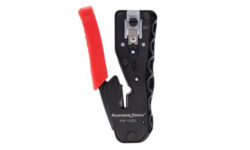3 Ways to Help Clients Adapt Security Solutions for Better Workplaces
A flexible workplace will require expanding advanced screening solutions and integrating deeper into other systems.

Thoughtful integration helps companies better protect a workplace’s health and safety while also demonstrating scalability and long-term system value post-pandemic.
The COVID-19 pandemic fundamentally altered how organizations integrate security solutions into their operations. At one time, organizations may have been content with simply protecting physical and digital assets, but now they expect solutions that promote safer, healthier and more efficient workplaces.
This shift has triggered a quick adoption of digital, touchless and highly integrated security solutions, along with data-powered analytics that help leaders make more informed decisions.
The digital shift will continue long after the pandemic recedes. Security consumers want products that together create seamless, simple and integrated experiences — especially so within their facilities. Here are three ways companies have adapted their security systems to meet growing needs and how integrators can help companies prepare for more.
Flexible, Yet Secure Workplaces
The very nature of the workplace is currently up for discussion. Companies accustomed to fully staffed offices will have to adapt to an increased desire for flexible work environments. A recent CBRE survey found 56% of employees expect to have the flexibility to work outside the office after the pandemic — a 20-percentage-point increase from before the pandemic.
Yet the office still offers important benefits: PwC’s latest US Remote Work Survey found employees believe their office space’s main purposes are to enable collaboration with colleagues and provide secure access to documents and equipment. These are more challenging goals to accomplish when working remotely. It seems likely that most companies will adopt a flexible, hybrid approach to using their workplaces. Their security solutions must be equally flexible.
End users will face many questions as workers return to a flexible environment:
- Who needs to be in the office and for how many days per week?
- What is the process for admitting visitors and vendors on-site?
- How can companies encourage continued social distancing in facilities?
- What about certain surge times, like shift changes or busy times of the year?
Security integrators will be key partners in answering these and other safety questions. Understanding how products connect — and where new opportunities like “anything as-a-service” (XaaS) and Cloud solutions fit in — gives integrators the insight to recommend the best products for an evolving, flexible workplace.
Integration of Advanced Screening
The security industry saw these pertinent safety questions emerge when end users began advanced screening programs. These solutions appeared as human temperature screening, touchless doors with automated access control, and contact tracing during the pandemic.
A flexible workplace will require expanding advanced screening solutions and integrating deeper into other systems. Thoughtful integration helps companies better protect a workplace’s health and safety while also demonstrating scalability and long-term system value post-pandemic.
For example, human temperature screening was rife with inefficient, manually administered procedures as companies rushed to implement the technology. A physical identity access management (PIAM) solution, integrated with functions like access control, can automate the vetting, credentialing and access management functions companies undertake when screening employees and visitors. Coupled with customizable workflow engines, end users can automate enforcement of their safety and security policies, better protecting workplaces and unlocking efficiencies.
Easily Accessible Data-Driven Insights
No integrated system is complete without planning for the future, and that future is data-driven. Companies have gotten savvier about developing insights from their data, including the information their security systems gather. An integrated system depends upon a healthy stream of data to enable more informed decision-making.
That’ll be key in a future filled with flexible workplaces. For example, while installed video cameras already offer threat deterrence, video analytics can now review camera footage to detect early warning signs of issues. Analytics can assist in occupancy tracking — counting the number of people in an area — and motion tracking to ensure no space is overly crowded. Companies can even analyze footage of employees and visitors to detect behavioral anomalies that could threaten the workplace.
Analytics can also drive operational efficiencies — something of great interest to companies preparing for the post-pandemic economy. Video analytics integrated with the previously mentioned PIAM solution can help identify how employees use their workplace, trends in occupancy levels, and highly trafficked areas deserving more attention. Companies can then plan out more efficient use of the workplace.
While the pandemic challenged how many companies used their workplaces, it’s also demonstrated the greater value end users can uncover from their security systems. Integrators should embrace this adoption wave and learn more about the best solutions for the digital, touchless, fully integrated future.
Kyle Gordon is Vice President of U.S. Field Sales at STANLEY Security, where he oversees a team responsible for all commercial activities in the organization.
If you enjoyed this article and want to receive more valuable industry content like this, click here to sign up for our FREE digital newsletters!

Security Is Our Business, Too
For professionals who recommend, buy and install all types of electronic security equipment, a free subscription to Commercial Integrator + Security Sales & Integration is like having a consultant on call. You’ll find an ideal balance of technology and business coverage, with installation tips and techniques for products and updates on how to add to your bottom line.
A FREE subscription to the top resource for security and integration industry will prove to be invaluable.







